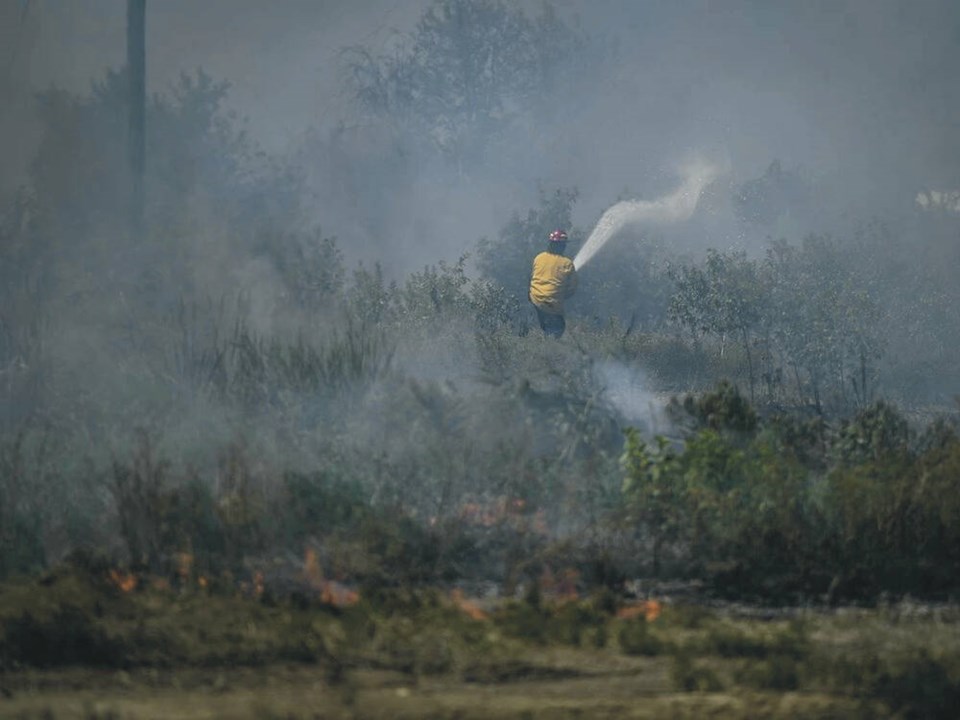It’s becoming clear that this year’s forest fire season will be the most destructive ever. Major fires are blazing throughout B.C., in the Northwest Territories, and across the country.
The most recent estimates are that nationwide, more than 14.5 million hectares (nearly 36 million acres) have burned to date, or around five per cent of the entire forest area of Canada.
In B.C., more than 1.6 million hectares have burned — half the area of Vancouver Island — and two young firefighters have been killed.
A provincewide state of emergency has been declared, and several towns are staring disaster in the face. Kelowna’s lovely Lake Okanagan Resort has burned to the ground.
To the north, the entire city of Yellowknife has been evacuated, and some of the suburbs are on fire.
While the figures are still rising, nationwide, government costs have reached more than $1.5 billion, and that figure is certain to increase.
The government of B.C. alone has spent $450 million so far this year, and the summer is not yet over. That follows a record outlay of $800 million in 2022.
Moreover the blow has fallen heavily on several areas of the country least able to afford it, among them Nova Scotia and New Brunswick.
The Northwest Territories in particular is stretched beyond breaking point. That’s due, in part, to the requirement that territorial governments are now held responsible for resource management, firefighting included. None is remotely in a position to bear such a cost.
Clearly, we cannot go on as we’re going. This is not a local emergency, or a provincial/territorial emergency, but a national emergency.
Yet that is not how the crisis is being managed. Basically, the provinces and territories have been left to their own devices.
The federal government’s only financial contribution so far is a paltry $39 million spread over five years, or just $8 million a year. And this drop in the ocean goes for training firefighters. That is indeed a worthy cause, but against costs of $1.5 billion, nowhere near enough.
Confronted with Ottawa’s refusal to step up in what has become a national emergency, Harjit Sajjan, the federal minister of emergency preparedness, offered this tone-deaf effort: “The country already has sufficient resources to manage the wildfires.”
All the minister had to do was look out his window. On several occasions the air quality index reached 10 in Ottawa — the worst pollution readings worldwide.
Meanwhile the prime minister’s contribution to the crisis has been to convene an “incident response group” of ministers and officials.
They “responded” by discussing the need for better communications, a case of fiddling while the country burns.
What then should be done?
A wildfire expert at Thompson Rivers University in Kamloops, professor Mike Flannigan, wants to see a national firefighting authority set up. He argues the cost would easily be offset by the savings in property and lives.
He also points out that calling on the armed forces to assist in evacuations — an all-too common fall-back — is no substitute for a long-term solution.
The proposal makes all manner of sense. Indeed, with hot summers forecast to continue, it is the only rational choice.
That doesn’t make it any the easier to carry out. Getting all 13 provinces and territories to agree on a financing formula won’t be straightforward.
And convincing Ottawa to take on a role the federal government clearly wants no part of will be an uphill struggle.
Yet when entire cities are threatened, and huge tracts of our forests are burning, there is no other viable solution.
We must have a national firefighting force.
>>> To comment on this article, write a letter to the editor: [email protected]



